
Earl Rudolph "Bud" Powell was an American jazz pianist and composer. A pioneer in the development of bebop and its associated contributions to jazz theory, Powell's application of complex phrasing to the piano influenced both his contemporaries and later pianists including Walter Davis, Jr., Toshiko Akiyoshi, and Barry Harris.

"Un Poco Loco" is an Afro-Cuban jazz standard composed by American jazz pianist Bud Powell. It was first recorded for Blue Note Records by Powell, Curly Russell, and Max Roach on May 1, 1951.

Richard Powell was an American jazz pianist, composer, and arranger. He was not assisted in his musical development by Bud, his older and better known brother, but both played predominantly in the bebop style.

Dillon "Curley" Russell was an American jazz musician, who played bass on many bebop recordings.
Scott Yanow is an American jazz reviewer, historian, and author.

The Amazing Bud Powell is a ten-inch LP by American jazz pianist Bud Powell, recorded on August 8, 1949, and May 1, 1951, and released on Blue Note in April 1952. In the first session, Powell performed in quintet with Fats Navarro, Sonny Rollins, Tommy Potter and Roy Haynes, and in trio with Potter and Haynes. In the second, Powell performed in trio with Curley Russell and Max Roach, and solo.
"Groovin' High" is an influential 1945 song by jazz composer and trumpeter Dizzy Gillespie. The song was a bebop mainstay that became a jazz standard, one of Gillespie's best known hits, and according to Bebop: The Music and Its Players author Thomas Owens, "the first famous bebop recording". The song is a complex musical arrangement based on the chord structure of the 1920 standard originally recorded by Paul Whiteman, "Whispering", with lyrics by John Schonberger and Richard Coburn (né Frank Reginald DeLong; 1886–1952) and music by Vincent Rose. The biography Dizzy characterizes the song as "a pleasant medium-tempo tune" that "demonstrates...[Gillespie's] skill in fashioning interesting textures using only six instruments".

The Amazing Bud Powell, Vol. 2 is a ten-inch LP by American jazz pianist Bud Powell recorded at WOR Studios in New York on August 14, 1953 and released on Blue Note the following year. Powell is backed by rhythm section George Duvivier and Art Taylor.

Time Waits, also known as The Amazing Bud Powell, Vol. 4, is a studio album by American jazz pianist Bud Powell recorded at Van Gelder Studio on May 24, 1958 with rhythm section Sam Jones and Philly Joe Jones and released on Blue Note later that year.
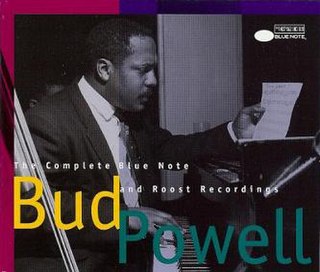
The Complete Blue Note and Roost Recordings is a four-disc box set by American jazz pianist Bud Powell compiling his recordings as leader for Blue Note, and two early sessions for Roost, released by Blue Note on October 4, 1994.

Blue Serge is an album by jazz baritone saxophonist Serge Chaloff, and released by Capitol Records in 1956. It was recorded on March 14 and 16, 1956 at Capitol Studios in Los Angeles, California.
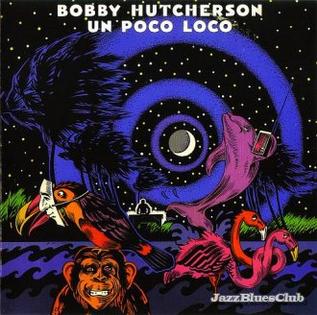
Un Poco Loco is an album by American jazz vibraphonist Bobby Hutcherson, recorded in 1979 and released on the Columbia label. The album was Hutcherson's last for Columbia.

Triple Threat is the fourth album by saxophonist Jimmy Heath featuring performances recorded in 1962 originally released on the Riverside label.
Bouncing with Bud is a 1946 jazz standard by American pianist Bud Powell and Gil Fuller, which features the saxophone of Sonny Stitt and the trumpet of Kenny Dorham. It was originally recorded on 23 August 1946 as "Bebop in Pastel".
"Glass Enclosure" is a composition by jazz pianist Bud Powell. The first recording was Powell's version for Blue Note Records in 1953, which was released as part of the album The Amazing Bud Powell, Vol. 2 the following year. It was also released as one side of a single, with "I Want to Be Happy".
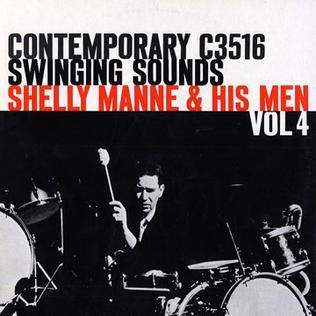
Swinging Sounds is a jazz album by drummer Shelly Manne's group Shelly Manne & His Men, recorded in 1956 and released on the Contemporary label. Early releases of the album were labelled Vol 4, indicating it was the fourth volume of recordings released by the group.
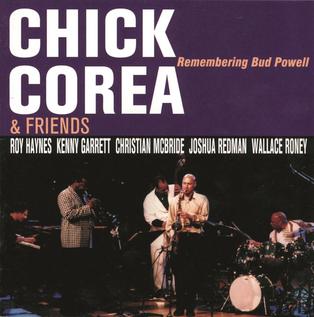
Remembering Bud Powell is an album by pianist Chick Corea and Friends performing tunes by Bud Powell. It was released on Corea's Stretch label in 1997.
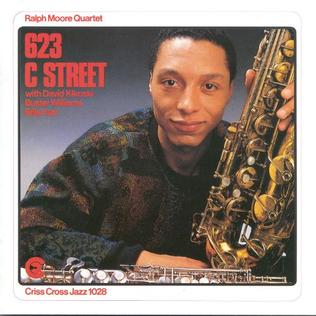
623 C Street is the second album led by saxophonist Ralph Moore which was recorded in 1987 and released on the Dutch Criss Cross Jazz label.
"Una Noche con Francis", originally titled "Un Noche con Francis", is a calypso jazz composition written by Bud Powell in 1964 and dedicated to jazz fan and amateur musician Francis Paudras.
"Bud on Bach" is a composition written by jazz pianist Bud Powell for his 1957 album Bud!, also known as The Amazing Bud Powell, Vol. 3. It is unusual among jazz compositions for being based upon Solfeggietto, a composition by Carl Philipp Emanuel Bach.















